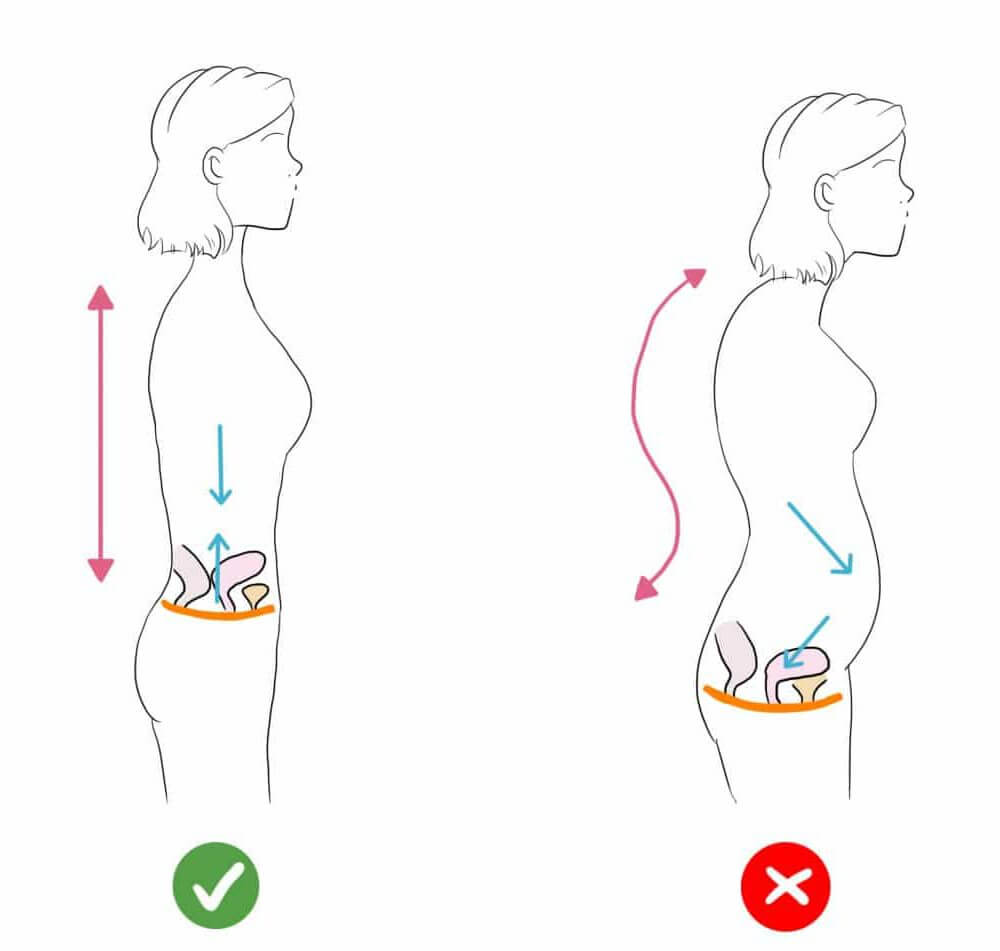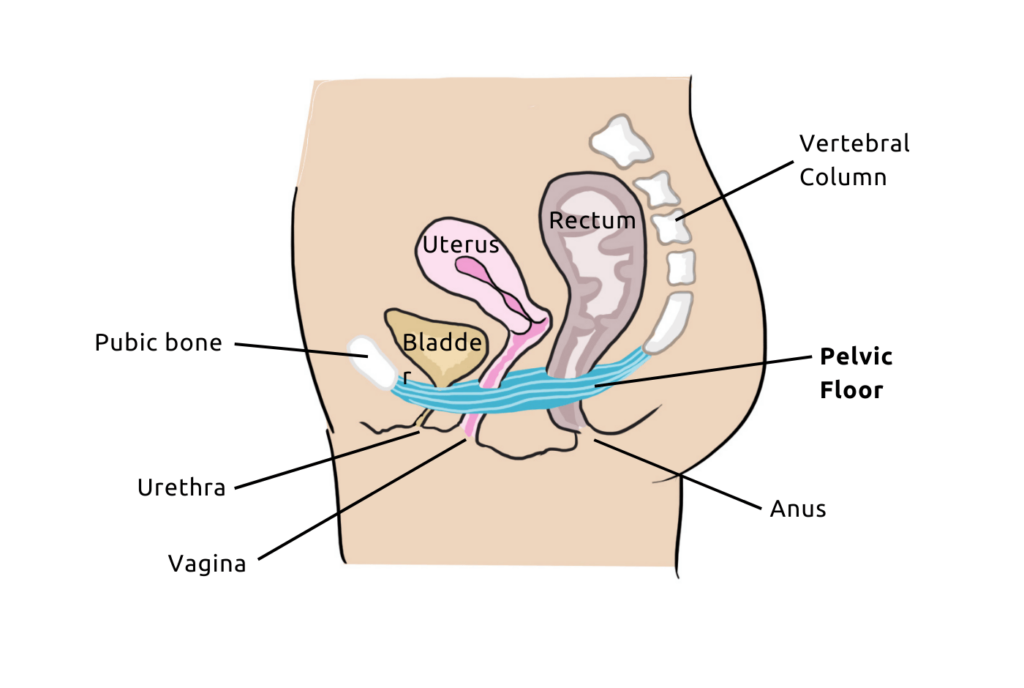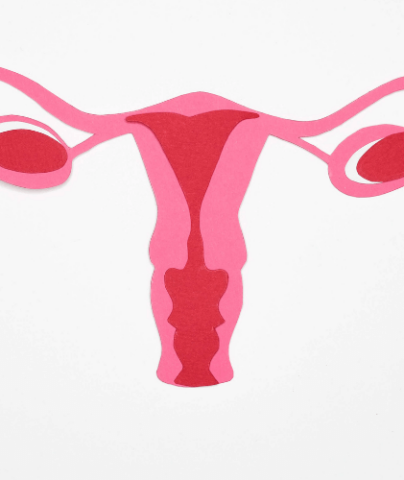
Can a prolapsed bladder cause lower back pain?
A weakened pelvic floor could be the cause of various health issues such as organ prolapse or a prolapsed bladder. But can a prolapsed bladder cause lower back pain ? What is the link between lower back pain and the pelvic floor
Link between lower back pain and pelvic floor
Dr. Marine Lallemant, a gynecologist specialized in pelvi-perineology, gives us some insights to better understand the link between prolapse and lower back pain.
Lower back pain
On an average, 4 out of 5 French people will suffer from low back pain during their lifetime and over the past twelve months, more than half of the French population has had an episode of back pain.
Low back pain, which literally means “pain in the lower back”, can be short-lived or long-lasting and can have numerous causes. In any case, pain has an impact on our posture and the way we move.

Our back is subjected to constraints during the day due to daily life activities and at night due to the lying down position maintained for several hours.
So be careful, your lower back pain could be due to various factors. And it is possible that your perineum is one of the causes. So if you have any doubts, do not hesitate to talk to your doctor or a healthcare professional.
Posture, back pain, and perineum
The plvic floor is located in the pelvis and surrounds the rectum, vagina, and bladder. It extends from the pubis in front to the coccyx in the back and is much more essential than we think. As shown in the following diagram, depending on our posture, the forces applied to the perineum are not the same:

When we stand straight, the pressure exerted by gravity and the diaphragm is a vertical pressure that is compensated by the pelvic floor when it has good tonicity.
On the other hand, in the second case, the forces applied go forward towards the abdominal wall, which deforms and are directed downwards and backwards. The perineum is much less effective in compensating for a force oriented backwards.
Over the long term, there is an increased risk of urinary leakage or even prolapse, so to avoid lower back pain, it is essential to work on your posture. Exercises focusing on awareness and alignment can have indirect benefits and protect your pelvic floor.

Lower Back Pain and pelvic floor Prolapse
Back pain can affect your posture. A poor posture can lead to lower back pain. Essentially, it’s a vicious circle. Whether one is the cause of the other or vice versa, poor posture can have consequences on your perineum.

Combined with a normal lumbar curve, all the muscles of the pelvic floor help protect the organs of the small pelvis. Indeed, they lean on each other and primarily on the pelvic floor.
Poor Posture, pelvic floor and Prolapse
In case of poor posture, the forces acting on these organs change and complications can arise in the long term. Among the list of complications, organ descent can occur.
Indeed, in the case of excessive lumbar curve, the axis of the vagina can become more vertical. In this situation, the cervix ends up above the vagina. It can then start to descend slowly, which can lead to a prolapse.

For example, it could be a cystocele if the bladder protrudes. Or a rectocele when the rectum descends.
Naturally, the lumbar curve will not be the sole cause of prolapse appearance. Many other factors impact pelvic floor tone, such as excessive straining during bowel movements, chronic cough, being overweight, etc.
Dorsal Kyphosis
In another scenario, if your back is curved forward, this is known as kyphosis. In this case, the diaphragm presses on the abdominal organs, increasing pelvic pressure and causing the organs to exert pressure on the pelvic floor and causes a feeling of heaviness in the lower abdomen.
Understanding the Muscles of the Pelvic Floor
The muscles of the perineum, like other muscles in the body, do not work in isolation. They are connected to other muscles in the form of muscle chains.
The muscles of the perineum work simultaneously with the back muscles and the abdominal muscles. The pelvic floor is once again central, as it is located at the intersection of the two largest chains: the posterior chain and the anterior chain!
The muscle chains by Françoise Mézières, a French physiotherapist. She developed a care concept based on stretching. According to her, muscle retractions can cause pain or compensations further along these chains. Thus, a lack of flexibility or poor muscle tone can have an impact on the perineum and vice versa.

This list of connections between the perineum and low back pain is not exhaustive, but it helps to understand that the body is more than just a collection of isolated organs. Each organ is influenced by the others, and one must see the body as a whole.
Toning the Pelvic Floor to Prevent Back Pain
You have understood that maintaining and strengthening the pelvic floor is essential to address various health issues. Preventing urinary leaks, prolapse, pain, or even improving sexual pleasure, the benefits of pelvic floor rehabilitation are numerous!
In an effort to facilitate access to health at home, Fizimed has developed a comprehensive solution for performing perineal exercises to maintain the necessary tone for good posture and thus prevent minor perineal-related issues, such as back pain.
The Emy kegel trainer for Treating Prolapse Symptoms
The Emy trainer consists of a mobile application and a connected intra-vaginal device to help you work on your pelvic floor easily from home.
Emy is a medical device whose effectiveness is clinically proven and helps improve the quality of life of users after 3 weeks of use.

Its smart application offers you fun exercises (like launching a rocket, throwing darts…) that you control with your pelvic floor! The big plus? The exercises adapt to your level and are based on medical protocols.
The Emy device records your contractions with patented technology to allow you to easily track your progress. It also works without electrical stimuli but through recognized biofeedback to visualize live on your smartphone, your contractions, your level and your progress, and thus simply monitor your evolution.
With the Emy solution, quickly and in the long term relieve your back pain related to the pelvic floor for a pain-free daily life. Because yes, you too have the right to get up in the morning and feel good!

So if you suffer from lower back pain related to a prolapse, do not neglect the importance of your pelvic floor! Pelvic floor rehabilitation will only be beneficial for your symptoms.
How to avoid lower back pain?
Lower back pain can occur following a prolapse but not only. Back pain can occur due to a bad gesture, bad posture, overuse, etc. It can be very interesting to take a few minutes to analyze the pain:
- Does it come more in the morning? At night? In the evening, after a day’s work?
- Is it triggered by a particular movement? A special posture?
- Is it improved by massage? Heat? Stretching
These indications will allow you to identify what causes the pain and what relieves it. And if you have any doubt or if the pain persists, you can contact a healthcare professional who will be able to assess your low back pain and propose an appropriate treatment.

In any case, the back likes and needs movement! By taking care to avoid painful movements and amplitudes, the worst thing is not to move at all, to immobilize oneself. Let’s not forget that the word “physical therapy” comes from Greek and means “healing through movement”.
The sports we can recommend are soft sports such as walking, swimming, gymnastics, rollerblading, you can also try yoga or pilates.

Free Pelvic floor guide
Find out how to strengthen your pelvic floor to prevent bladder weakness and improve intimate pleasure! 💥


